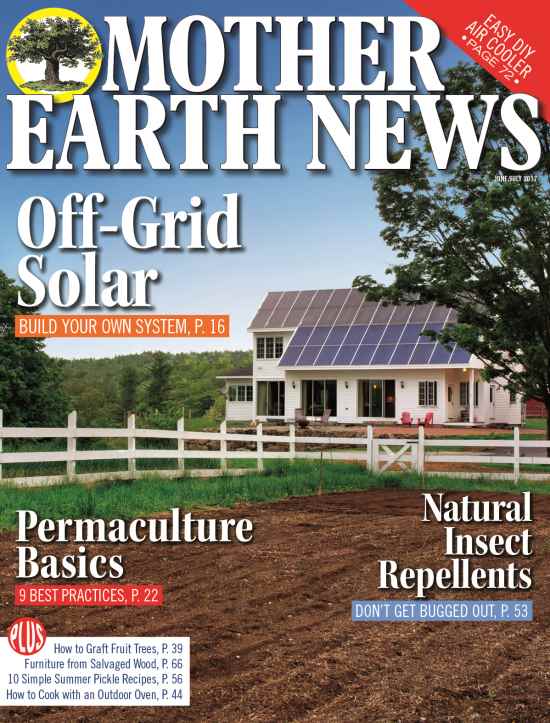Permaculture design can be used to create beautiful, productive, and regenerative ecosystems. However, it requires a good deal of planning, knowledge, and training to do it right. Here are five permaculture design mistakes to avoid.
What is Permaculture Design?
Permaculture design is a type of design which creates functional and efficient garden spaces. It takes into account various methods of planting and designing a garden.
It mimics the natural patterns of growth and organization of certain plants and creates a space which can make a home more sustainable and organic.
Not Having a Good Plan
Permaculture turns out a lot better if you have your end goal in mind. How do you want your permaculture to look? Are you trying to grow your own food? Do you want to include some animals? How fertile is the soil in the land you’ve got? The answers to these sorts of questions should be known before you get too far.
You might have a few ideas that actually don’t work well together at all. Do you want to grow lots of vegetables, and also like the idea of having goats around? It won’t work, your veggies sadly won’t last long with the goats around. Think about you and your family’s needs and make some lists. If you have a big family, you’ll want to think about things like leaving space for kids to play, extra food production, and safety hazards like ponds.
Wrong Spacing
Before you start planting, you have to understand proper spacing. Those small plants will grow big. Here is how you can do that.
If you want to plant two shrubs that will grow to be 6’ wide when mature, you should divide that by two. You’ll get 3’ which means that the shrub needs at least 3’ in space around it at all angles. Since you want to plant two shrubs, the space between them will be 6’. You should also account for where the plants will be, so, for instance, you should plant them at least 3’ away from your home and add an extra 1’ so you can move between the house and the plant. This will also protect your home from damage.
“You’ll save yourself a ton of disappointment if you don’t do this. Each plant needs its own space and it will look much better like this,” recommends Carmen Parson, design blogger at Revieweal.
Lack of zones
Organize your garden space into zones:
- Zone 1 – where you plant things you’ll use several times a day like spices, herbs, greens and vegetables. This can be your patio or your deck – this is where you garden the most.
- Zone 2 – this is where your barn and tools are as well as some crops, fruit trees, rabbits, poultry, ponds and so on. It’s semi-cultivated.
- Zone 3 – this is where pastures, food storage and larger animals are. Firewood is here as well.
- Zone 4 – this is a minimally cared for area where grazing and hunting animals happens.
- Zone 5 – is wilderness where you can find mushrooms, native animals, wildcrafts, foraging and so on.
Some gardens only have space for two zones. That’s okay. But make sure you have usefulness in mind when designing. Herb gardens should always be near the kitchen so you can use them easily, for example.
“Permaculture design is a design that creates functional and efficient spaces. If it’s not functional, it’s not permaculture design. Zoning is something that helps with both functionality and efficiency” advises Esther Ritchie, garden blogger at Paperfellows and State Of Writing.
No vision
So, you might have a problem that disables you from having a garden that you have always dreamed of having. Most people make a mistake here and come up with ideas that bomb their budget and are not efficient in the end. For example, you have a big dog that will step all over your veggies.
Raised beds are not always the solution, even though it might seem like a logical solution. But they are often too expensive and limit your design. However, when you think about it, you don’t need them at all.
A simple fence will work well. This way, you can access your veggies but your dog can’t. You can divide your yard and have a flower garden in the part where the dog will be while having a veggie garden as well.
Planting one of everything
“Plants in the nursery all look amazing and you can’t always resist. However, getting them all isn’t a viable option. Pick some that will really work well for you and don’t go to the nursery without a plan,” recommends Mildred Gaulke, exterior designer at Oxessays and Essayroo.
Once you get home with all of those plants and you start planting them, you’ll realize that there’s no consistency or design in your garden. Just a bunch of different plants.
When planting an edible garden, focus on getting groups of plants. For a formal feel, pick even numbers and for an informal, rustic feel pick odd-numbers.
This looks gorgeous and serene – as a bonus it’s much easier for harvesting. Just imagine having one beautiful yellow flower versus having a patch of them in your garden.
Conclusion
Building a beautiful garden that’s also edible is a complex task. You need a plan and knowledge on planting. In order to create a wonderful space for you and your family, keep these tips in mind and have fun.











2 Comments
Pretty much nothing here is about permaculture per se; it’s about good planning for landscaping, gardens, and the homestead.
permaculture…like more on actually cutting up weeds or not, how often and mixing and spacing results on productivity.
I’m trying permaculture, not disturbing roots but like to hear more about weeds and better productivity. I admit, I have less weeds than ever tho, w cutting them up but lots more clover.